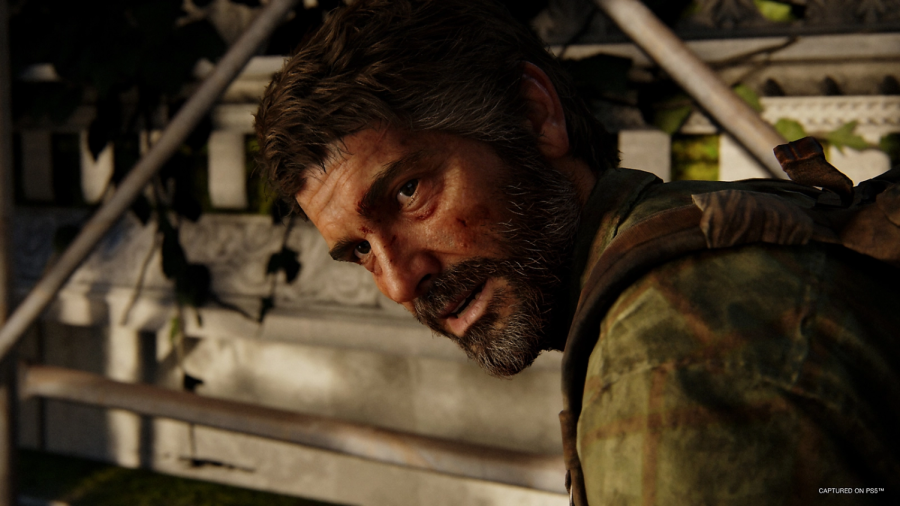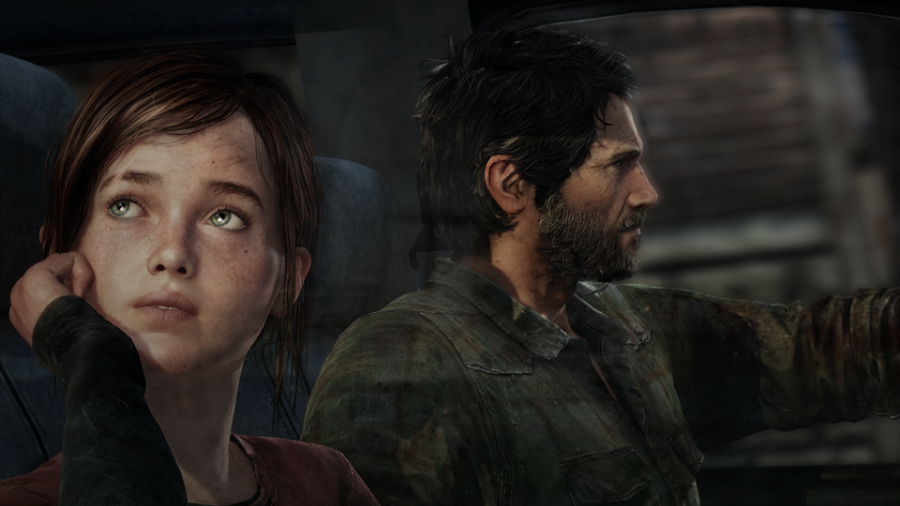Celebrating “The Last of Us” 10 years later
“The Last of Us” is a third-person, post-apocalyptic, action-adventure game with major focus on characters and an enthralling story.
January 14, 2023
*This review contains spoilers for the story of the “Last of Us”*
With the live-action television series based on “The Last of Us” coming to HBO Max Jan. 15, I felt that it would be the right time to look back on “The Last of Us” video game, and why I consider it one of the most important games ever made.
“The Last of Us” was one of the last titles to release on the PlayStation 3 before the launch of the PlayStation 4 on Nov. 15, 2013. The game was developed by Naughty Dog, the same studio that created the “Uncharted” franchise. “The Last of Us” takes place in a post-apocalyptic U.S. after an outbreak of mutated fungi named cordyceps infected humans, turning them into cannibalistic creatures.
You play as a character named Joel, a survivor of the outbreak who travels across the ruins of the country. You are tasked to escort a girl named Ellie, who is immune to the cordyceps fungus, to a team of doctors who are working to find a cure. While you travel together, you use firearms, improvised weapons and stealth to defend against hostile humans and the infected.
I first played “The Last of Us” on the PS4 in the summer of 2016, and I immediately noticed that, from the surface, it was following a trend from the early 2010s. Zombie video games were extremely popular from around 2008 until 2010. To list a few notable entries, there’s “Left 4 Dead,” “The Walking Dead: The Telltale Definitive Series,” “Dead Rising,” “Dead Space” and “Dead Island.” Many of the zombie games released in this era became its own genre of video game. However, zombie games during this time almost guaranteed it would struggle to stand out amid the sea of other games.
“The Last of Us” didn’t just stand out among the rest, it became a landmark in video game history.

The atmosphere of this game was ahead of its time. The overgrown ruins of the U.S. awes me every time I see it. The unique way nature is reclaiming what used to be busy highways and city streets utilizes the post-apocalyptic setting. Little details like showing a pond forming over a city street, or moss growing on the side of vehicles really sets the player into the world of the game. The sound design is also top-notch with sounds of rain hitting the pavement or wind blowing past your character’s ears to elevate a lifeless world into a place that feels real.
This is further emphasized by the way the infected are portrayed. This game’s zombie virus is based on the real-world cordyceps fungus which infects insects, controls their movements and kills them before spreading its spores into the local environment to find a new insect host. The horror of “The Last of Us” is how accurate the game’s interpretation of the fungus is. Walking into infected areas and seeing this nasty fungus stretching across the walls while you hear infected humans scream in the distance is horrifying and gets your adrenaline pumping.
What really makes “The Last of Us” such a landmark in video game history is it is one of the first video games where the characters talk and act like people. Compared to other games that have a complex plot and simple characters, “The Last of Us” has a simple story, but complex characters.
The characters Joel, Ellie, Tess, Tommy, Bill, Henry, Sam and Marlene are all voice acted and motion captured to depict real human emotion, matching the game’s real theme of dissecting what it really means to be human.

In other video games, characters have a static way of talking to each other. One character says their line, then another character says their line. It is this emotionless back and forth where every single character says a full sentence without any human error which results in the player feeling no emotional attachment to the characters. In “The Last of Us,” the conversations are a lot more involved. Characters interrupt each other, talk over each other, respond non-verbally and sometimes, they don’t respond at all because every conversation is different and intentional to push the story along. Most importantly, they represent realistic characters.
The game’s opening sequence hits you with one of the most emotionally devastating scenes in video game history, even though it’s between two characters you don’t even know yet. The acting Troy Baker brings to Joel’s character in the first 20 minutes of this game hooks you and doesn’t let go until the credits roll.
In the climax of the first act, a character named Tess is laying out her dying wish to Joel. She leans into him, playing out desperation and self-delusion so she can think she’s dying as the hero of the story and her sacrifice can save the world. Not only is it telling of her character, but also the relationship she has with Joel in how she has to guilt-trip him into leaving her behind and take up her dying wish.
When the game begins, Joel is nearly identical to the infected that plague the country. His character is an ugly, hopeless man going through the motions to do everything he can to survive with complete emotional detachment. When his brother, Tommy, gives him a photo of his daughter that passed away at the beginning of the game, he denies it because the thought of reliving traumatic events is too much for him.
That is until Ellie comes into the picture, and players see Joel slipping back into that fatherly role. The intrigue of reading character’s mannerisms and factual expressions is something associated with high-tier theatre. It’s a form of storytelling that was never done before in a video game until “The Last of Us.”
All of this comes to a head with a story being told in the background. A main theme in “The Last of Us” is when people show their humanity and finally let their guard down, their reward is death. Multiple characters in this game die because they open up to others. Henry and Sam die after sharing their emotions to Joel and Ellie. The antagonist in the second act, David, dies because he shares his emotions to Ellie. This is an idea cemented in every character you meet, and no character knows it better than Joel. The payoff is that in the right circumstances, even Joel, a man jaded by time and has lost everything, can let his guard down and open up to new people.
The boundary-pushing legacy of “The Last of Us” is its dedication to characters over the plot. This approach has influenced other fantastic games released in the past decade, such as “God of War (2018),” “Uncharted 4: A Thief’s End” and “Red Dead Redemption 2.” This new age of gaming that mixes story and gameplay is a form of art that can only be experienced by playing video games, and it wouldn’t be this way without “The Last of Us.”
“The Last of Us” is a must-play for anyone interested in video games. I give it nine stars out of 10. With the TV show coming out and the remake coming to PC March 3, it has never been a better time to experience this story for the first time or to play it all over again.







